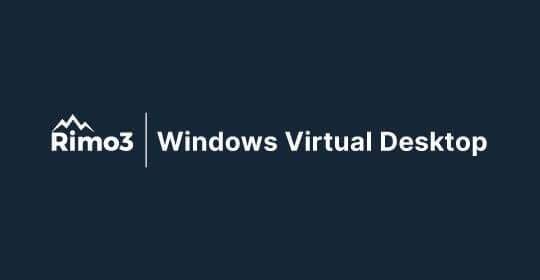The modern engineering team doesn’t sit in a single office, nor should their infrastructure. At Rimo3, a global software company helping customers automate and validate application readiness in modern IT environments, we realized that the future of development was not bound to physical devices. In the wake of COVID, we evolved into a fully distributed engineering organization, and this change became the catalyst for an even bigger shift.
We moved from traditional physical devices to Azure Dev Boxes, Microsoft’s cloud-hosted development environment. This transformation wasn't just about modernization, it was driven by security, scalability, and agility.
Why We Left Physical Devices Behind
Before the transition, our team used high-powered laptops and desktops for local development. But the challenges quickly added up, especially in a post-COVID world:
- Hardware logistics were painful: shipping, provisioning, repairs, and returns across countries.
- Compliance was inconsistent: ensuring encryption, policy adherence, and patching across devices was resource heavy.
- Onboarding was slow: configuring machines for new hires or contractors took days.
- We lacked burst capacity: spinning up temporary resources for new projects wasn’t practical.
- Security standards were hard to enforce and audit uniformly.
Our main driver was clear: we needed to dramatically improve our security posture and support our journey toward additional security certifications and regulatory compliance frameworks.
Azure Dev Boxes: A Game-Changer for a Distributed, Secure Engineering Team
Azure Dev Boxes gave us exactly what we needed—and more.
As a remote-first company, we needed a solution that met the realities of modern software development:
🛡️ 1. Built-In Security and Compliance
Security isn’t an afterthought for us—it's foundational. Azure Dev Boxes allowed us to:
- Centrally enforce security policies (encryption, disk lock, MFA)
- Leverage Intune-enrolled devices
- Integrate with Microsoft Entra ID (formerly Azure AD) for access control
- Log everything into Azure Monitor for visibility and auditing
- Meet compliance requirements without complex manual processes
With these capabilities, we’re now better positioned for SOC 2, ISO 27001, and other certifications without burdening our developers or overextending IT.
🌍 2. A Native Fit for Remote, Global Teams
Post-COVID, Rimo3 became a remote-native engineering department, hiring top talent regardless of location. Azure Dev Boxes made that easy:
- Dev environments spin up in minutes: no shipping, no customs, no delays.
- Engineers access their environment from anywhere, on any device.
- We offer consistent, reproducible development environments regardless of geography.
This change not only made onboarding smoother, but also significantly reduced support tickets related to local machine inconsistencies.
⚡ 3. Instant Burst Capacity = True Engineering Agility
Engineering workloads fluctuate. One month, we're heads-down on core development. The next, we're spinning up a temporary team to explore a customer initiative or proof of concept.
With Azure Dev Boxes, we now have on-demand burst capacity:
- Provision dozens of high-spec development machines in minutes
- Tailor environments for specific projects or teams
- Decommission everything after the project ends, no idle hardware, no reconfig cycles
This flexibility is a game-changer, especially when collaborating with external teams or contractors. We provide them with a secure, isolated, and powerful dev box without ever handing them access to our internal infrastructure.
Seamless Microsoft Ecosystem Integration
As a company deeply invested in Microsoft technologies -- Azure Cloud, Azure DevOps, and Visual Studio -- the setup was virtually frictionless:
- Visual Studio comes pre-installed and configured
- Azure CLI, SDKs, and tools are baked into custom images
- Azure DevOps repositories and pipelines work out of the box
- No new tool chains, no vendor lock headaches, just one integrated experience
It felt like we just turned on a switch. The environments were ready, secure, and identical. Devs were coding within minutes.
Comparison: Physical Devices vs. Azure Dev Boxes
| Physical Devices | Azure Dev Boxes | |
| Provisioning Time | Days to weeks | Minutes |
| Security & Compliance | Manual, decentralised | Centralised, policy-driven |
| Global Access | VPN-dependent, inconsistent | Optimised, secure cloud endpoints |
| Scalability / Burst | Limited, slow to scale | Instantly scalable, ephemeral |
| Toolchain Setup | Manual per device | Pre-configured in templates |
| Hardware Lifecycle | Purchase → Ship → Support → Decommission | Use → Scale → Delete |
| Onboarding Experience | High friction | Instant dev environment access |
Conclusion
Our shift to Azure Dev Boxes was a strategic move to support a secure, remote, and scalable engineering operation. We no longer think in terms of physical assets, but rather, in terms of velocity, repeatability, and compliance.
For engineering teams working remotely, managing security and compliance, and needing the flexibility to scale up or down rapidly, Azure Dev Boxes deliver where physical hardware cannot.
We’re no longer stuck with idle machines or reconfiguring laptops for every new initiative. Our infrastructure grows when we do, and disappears when we don’t need it.


